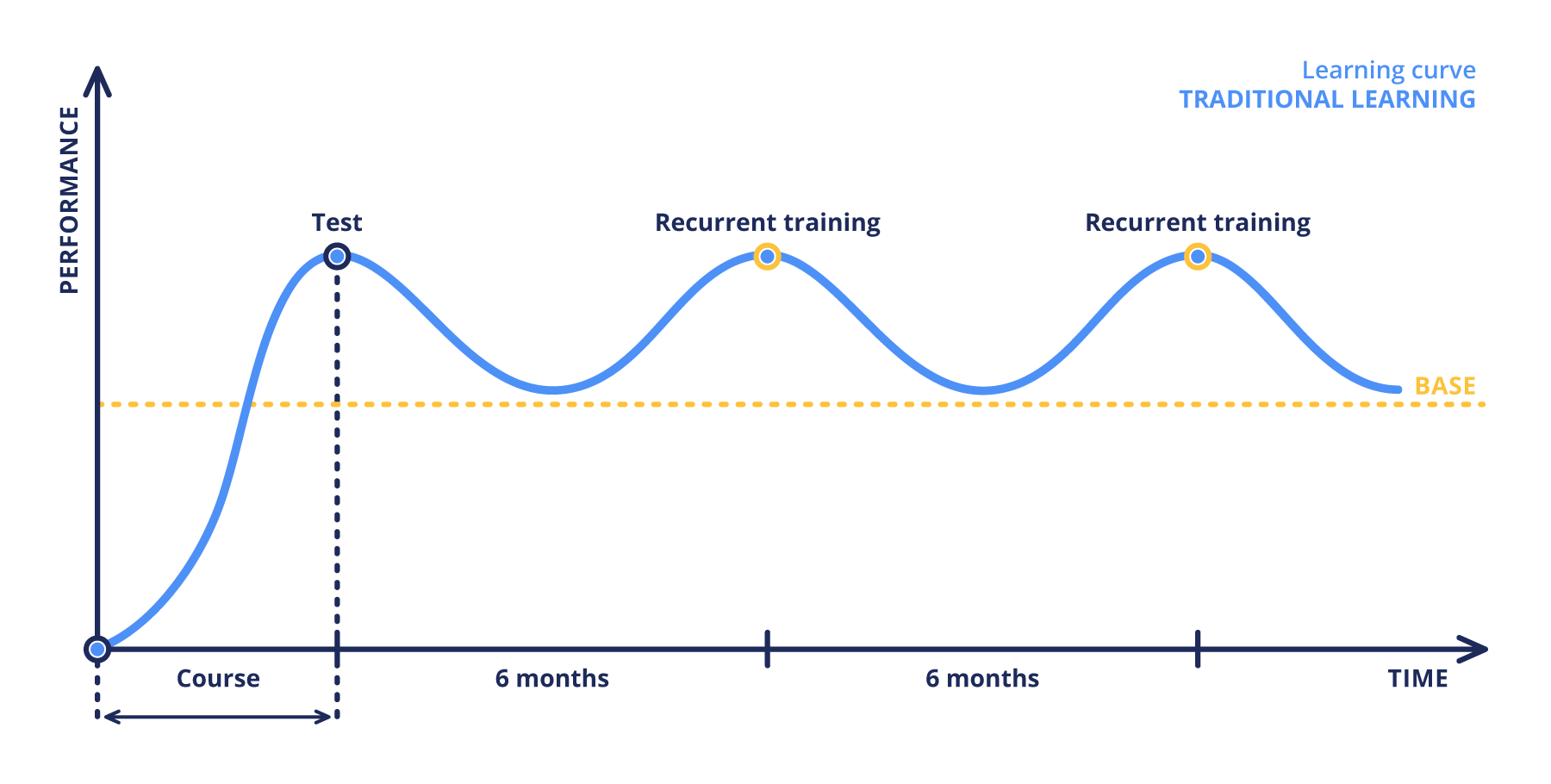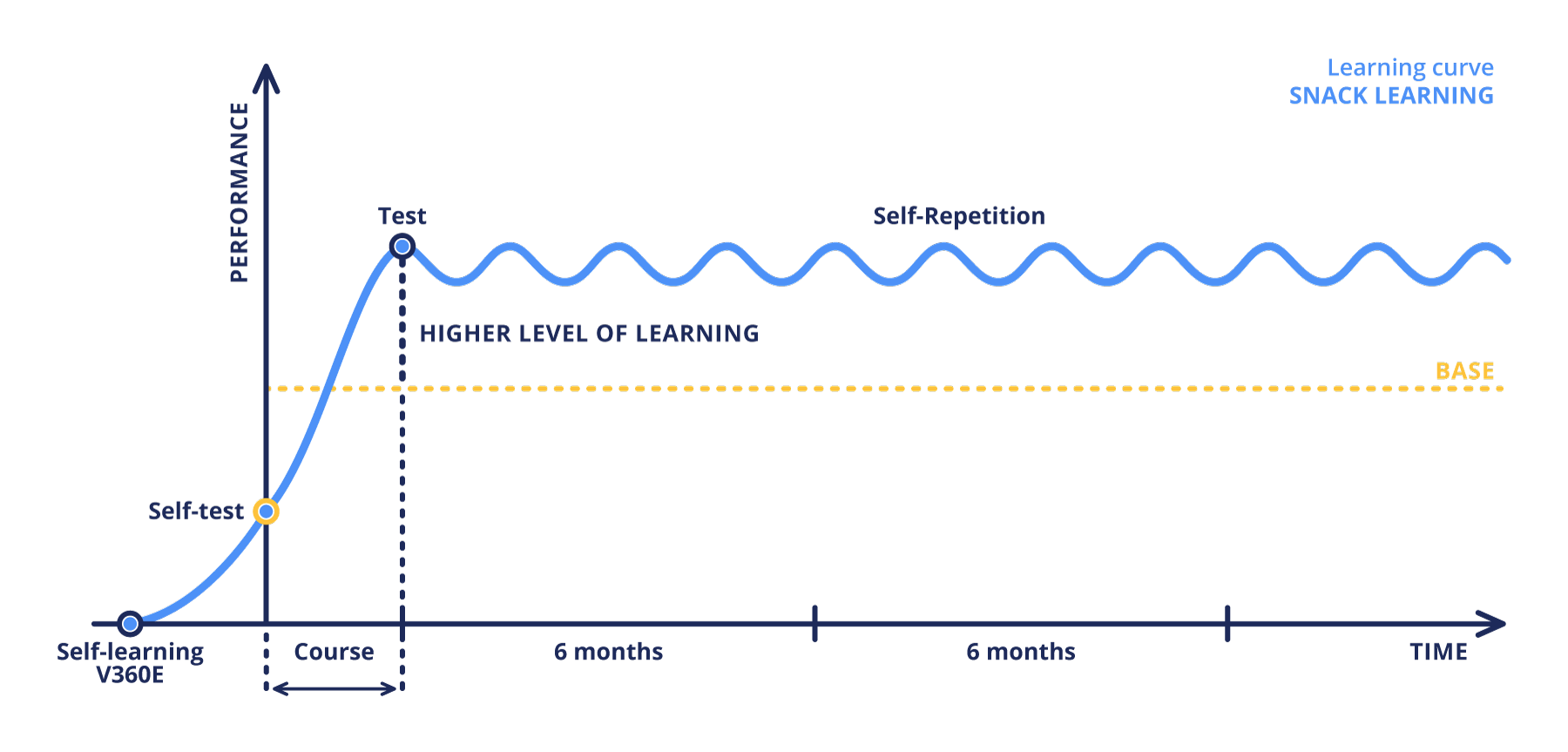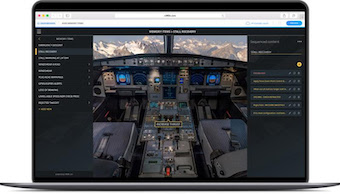Let’s admit it, we are too impatient to sit for hours in 2020! Learning should be short, visual and with meaningful stimuli to get our attention.
Snack learning is our approach to learning, where lessons are presented in relatively small units and short-term activities.
Over the years, e-learning has seen a paradigm shift favoring snack learning. Short and focused courses replace traditional courses that are long and aim for multiple objectives.
Particularly popular in corporate training, snack learning addresses the change in how we live in this digital age and the limited capacity of the human brain. The principle is simple and effective: information is most meaningfully processed by the learner when it is presented in digestible pieces.
So instead of long courses once or twice a year, lessons can be split into small snacks that can be taken as scheduled and as often as one wishes.
Key principles
Sometimes called microlearning or bite-sized learning, the snack learning approach holds these key principles:
One learning objective at a time
A module is designed to target a specific learning objective. It can be one or two tightly defined objectives. This way, the presentation of information is kept direct and contains only what is necessary to achieve the desired. Snack learning modules can be combined together to form a string of modules, to form a complete course.
Engage from start to finish
Capture your audience by keeping the module short and to the point. Apart from time consideration, it is also necessary to keep the learner engaged through what they see and hear. Visual and audio assets for sure help, but nothing beats overall well-put information design.
Allow self-learning and repetition
Both a principle and an advantage of snack learning is that the module is easily accessible for self-paced learning at any time or just in time when the need arises. The modules are specific and short, making it easy to identify, access, and repeatedly study even over a long period.
Positive outcomes
After reviewing the key principles of snack learning, it is not surprising why it has become a popular training approach. It delivers positive training results that ultimately yields to business outcomes.
Snack learning is highly effective in training because it emphasizes acquiring knowledge. If you expect employees or crew members to learn by heart, the way you conduct training should then cater to their learning capacity, providing manageable, digestible and enjoyable materials.
For instance, snack learning clearly wins over traditional training, where the learning curve falls after some time.
In traditional learning, where longer courses are taken with longer intervals, performance declines until the next training session takes place. As the forgetting curve hypothesis suggests, information drops over time when there is no attempt to retain it.

Recurrent training occurs every six months resulting in longer periods of decline in performance as it depends on training as a variable. The setup of longer courses with longer intervals yields to this curve in performance.
In contrast, snack learning yields better retention and performance due to self-repetition (the principle of self-paced learning and repetition).

Performance is maintained at a high level above the base requirement due to snack learning. This illustrates that the snack learning approach to training corresponds to high performance because it is effective for learning and allows self-repetition that sustains learning and performance.
Another great reason to adopt snack learning is that it caters to modern learners. Today’s workforce and learners want and expect their organisations to use current learning approaches and technologies. The rigidity of traditional training no longer works for modern learners who learn best when provided with flexibility and opportunities to build self-confidence.
Do you want to create immersive e-learning?
Create immersive courses rapidly and import them to any LMS.





